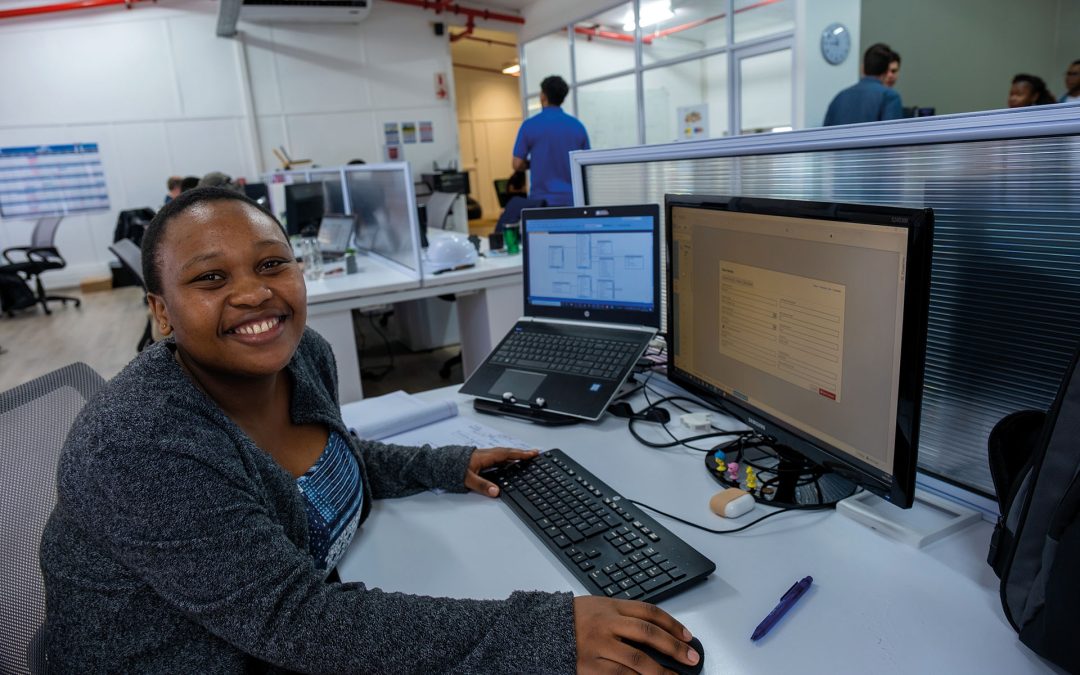It has been a trial by fire for one of ODIN Manufacturing’s newest developers, Asanda Madikizela, who, fresh from university, has risen rapidly to the challenge of making ODIN Manager a reality.
Part of the ODIN Workstation offering, ODIN Manager is a web-based application that allows customers to configure their production processes and access data straight from the production line.
“My job involves both back-end and front-end development, which is challenging and exciting at the same time,” says Madikizela, who has been working on the app for the past year.
“There’s a satisfaction one gets when that piece of code not only works but has a great interface to go with it.”
Her focus is on adding new features, making continuous improvements to existing ones, and fixing bugs to maintain efficiency and usability.
“I’m currently being challenged to create a scheduler page, which is quite complex. The gist of it is that the page must allow the user to create a scheduled job for a particular substation and assign schedules to it, which can be executed in three different ways – time based, part count or shift based. These scheduled jobs contain a list of jobs that must be executed for the operations to be marked as complete.”
She says one of the most fun and challenging aspects is ensuring that the interface is smooth and efficient to allow the user to add all the necessary information without running into complications or being unable to use the system effectively.
“I’m still brainstorming how the UI will look for this one and it’s promising to be the most exciting yet.”
Of course, moving from the front end to the back end has not been without its challenges.
“I would say I’m most proud of the work I did with the operations page rewrite, which is the most recent feature I worked on. It made me sweat and cry, and yet it brought me so much satisfaction and growth.
“The operations page had a lot of interacting tables. I remember being stuck for over a week trying to figure out how to get the image coming from a separate tab to be displayed on a second tab without having to hit the refresh button. This was previously on a separate page, and all you had to do was click a button and it would redirect you.
“I remember getting to a point in the second week where I actually went to the bathroom and cried a bit. I thought to myself, ‘I’m going to be stuck on this for another week, aren’t I?’”
Madikizela says she grappled with the problem, which was with the initialisation of the page, for days on end until a simple answer presented itself.
“Imagine my shock when, after a long and tiring trial and error, the problem was solved by only calling a certain property on the tab that allows the pages to be initialised for the first time when the user clicks on the tab.
“But honestly, I learnt a lot during that process; the most important was patience, and to continue searching for the answer even when you feel like you’ve done everything that you can. Because there’s always one more thing you can try.”

